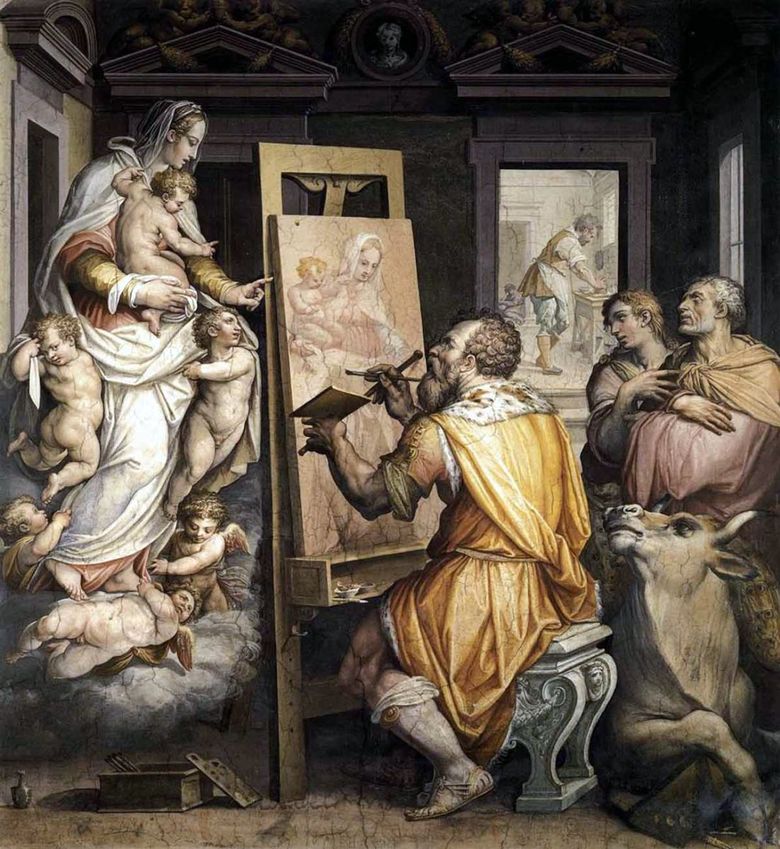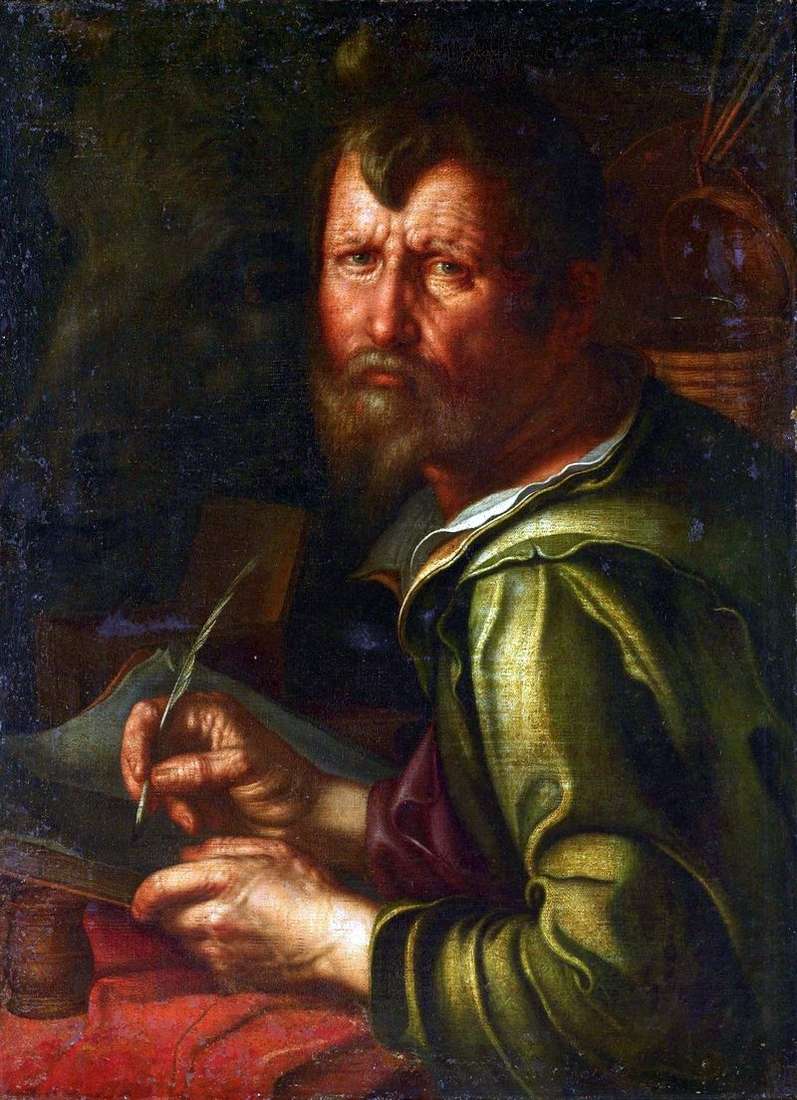
The picture is characterized by a multifigured composition and an original “multilayered” plot with rich hidden symbols. The canvas depicts Saint Luke, one of the evangelists, who painted a portrait of the Virgin with the Christ Child in his arms, and the figure of the Holy Virgin is present in the painting in two forms – so to speak, “in the original”, floating in the clouds and supported by plump cherubs, typical Italian “putti” “.
It is believed that the Evangelist Luke was an artist, so many painters were in the guild of St. Luke. In the painting, in the image of a saint, the master depicts himself, who writes from the nature of the Holy Mother of God. Behind him sitting on an elegant carved stool is a huge bull – this animal in its winged hypostasis was a symbol of the Evangelist Luke.
Each of the evangelists had its own symbol, all collectively called the Tetramorph. In this complex and largely mysterious picture, the sublime and earthly – the saints and gods – joined together, as well as ordinary people, such as the artist’s apprentice, rubbing paints in an adjacent room and visible by the viewer through an open door.
As was the manner of the Mannerist writing, the poses of the figures are complex, even pretentious, many draperies and rich finishing materials are used, the color range is rich, but not intensive, slightly “dusted”, noble and restrained.
 The Apostle Luke writes the image of the Virgin by El Greco
The Apostle Luke writes the image of the Virgin by El Greco Allegory of Justice by Giorgio Vasari
Allegory of Justice by Giorgio Vasari Siege of San Leo by Giorgio Vasari
Siege of San Leo by Giorgio Vasari Portrait of Alessandro Medici by Giorgio Vasari
Portrait of Alessandro Medici by Giorgio Vasari Saint Luc peint un portrait de la Vierge – Giorgio Vasari
Saint Luc peint un portrait de la Vierge – Giorgio Vasari Martyrdom of St. Stephen by Giorgio Vasari
Martyrdom of St. Stephen by Giorgio Vasari Luke the Evangelist, with Saints on the Fields
Luke the Evangelist, with Saints on the Fields The Evangelist Luke by Joachim Eteval
The Evangelist Luke by Joachim Eteval